When homeowners see bees buzzing around their property, they often wonder what type they’re dealing with. The honeybee vs bumblebee question comes up frequently, especially during spring when pollinators are most active around the DC metro area. Understanding the difference between these two types of bees helps you make better decisions about managing them on your property.
Over my four years in the field, I’ve noticed that homeowners sometimes mistake bumblebee or honeybee activity for wasps or carpenter bees. This confusion often happens when people notice bees entering gaps or voids in structures. Most concerns arise when bees are nesting too close to high-traffic areas or when someone in the household has allergies.
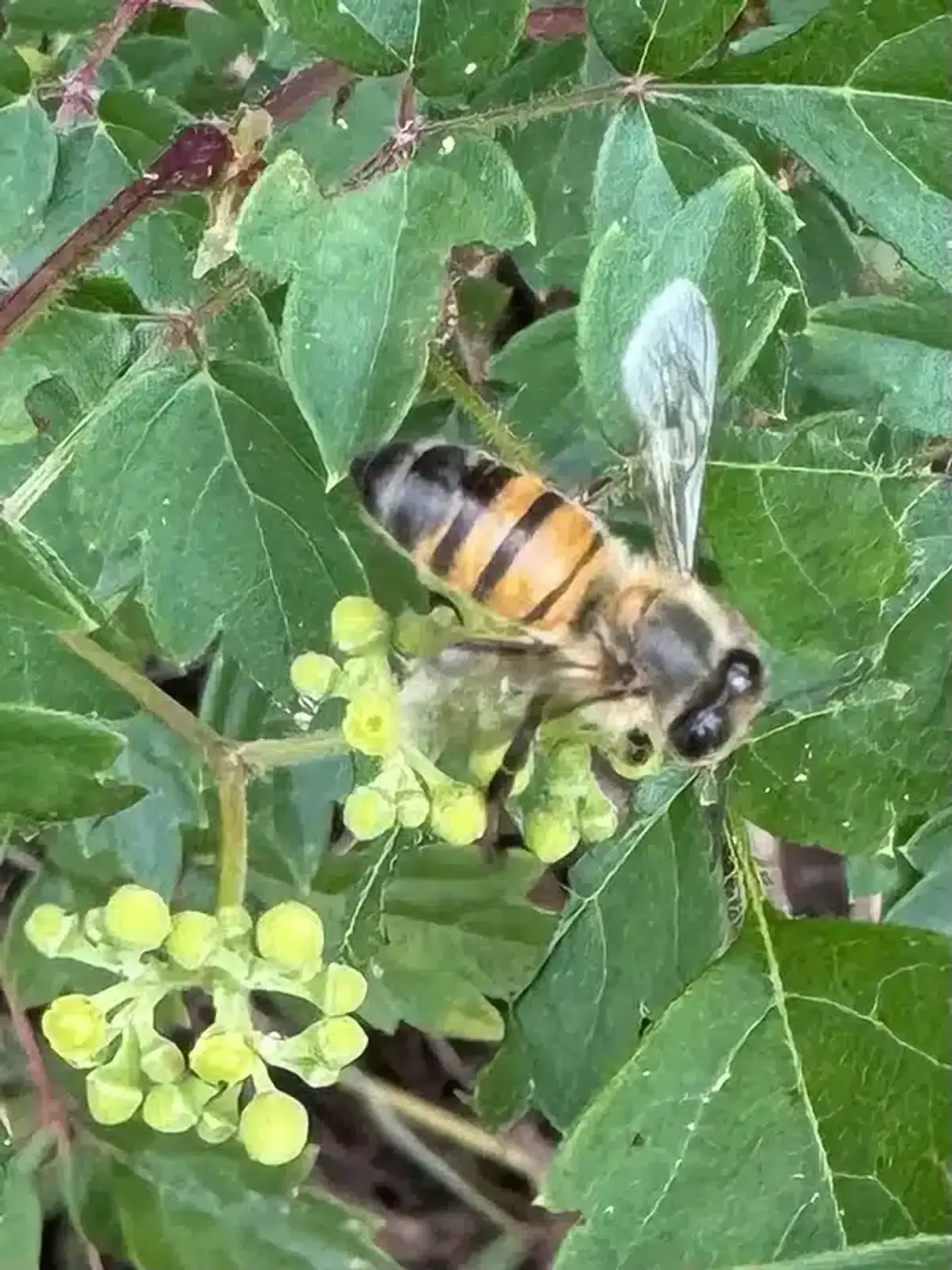
Physical Differences Between Honeybee and Bumblebee
The easiest way to tell bumblebees and honey bees apart is by looking at their bodies. A honey bee measures about ½ to ⅝ inch long with a slender build. Their bodies appear mostly brown-amber with even stripes across the abdomen. The sparse hairs give them a relatively shiny appearance compared to other bee species.
A bumblebee, on the other hand, is much more robust and fuzzy. These bees range from ½ to 1 inch long, with queens being the largest. They display bold bands of black, yellow, orange, and white coloring. Their entire abdomen stays covered in dense hair, making them look like flying teddy bears.
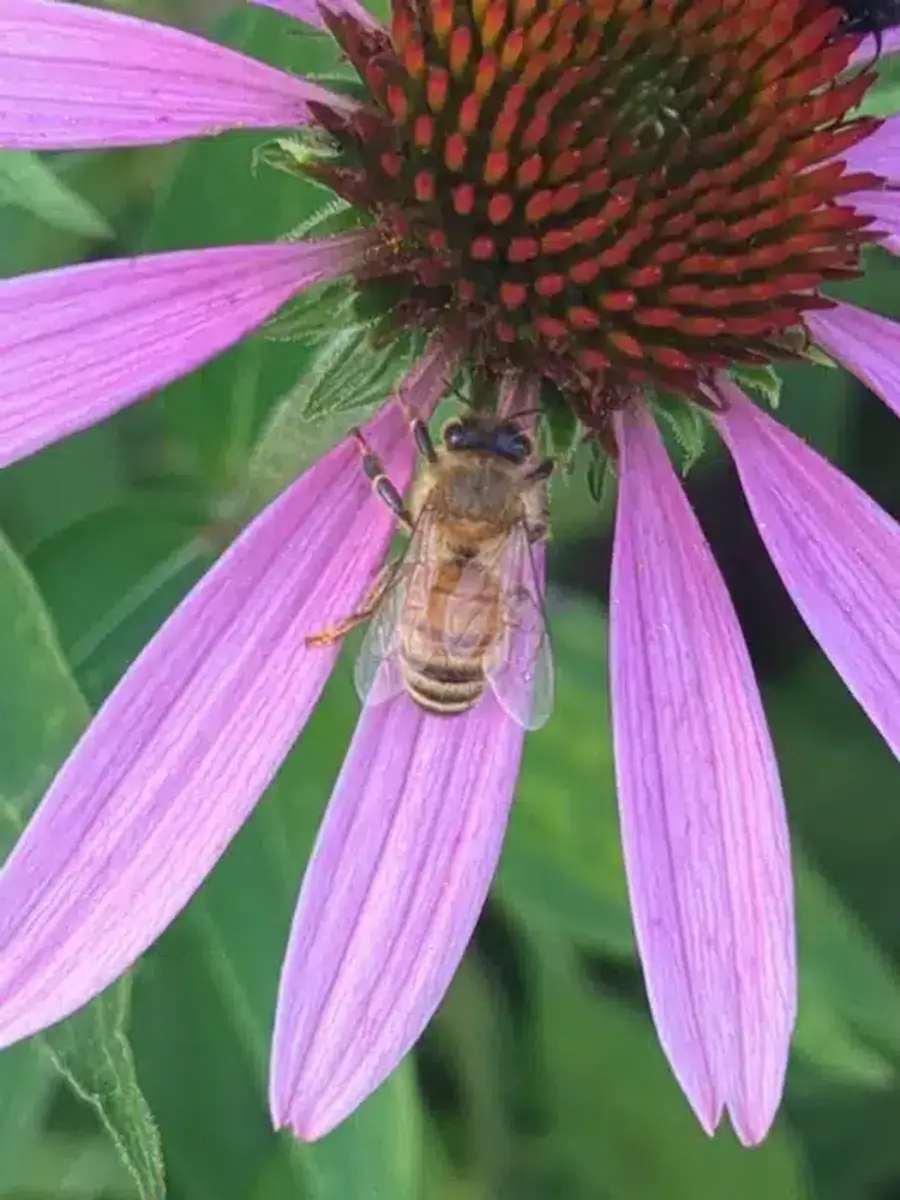
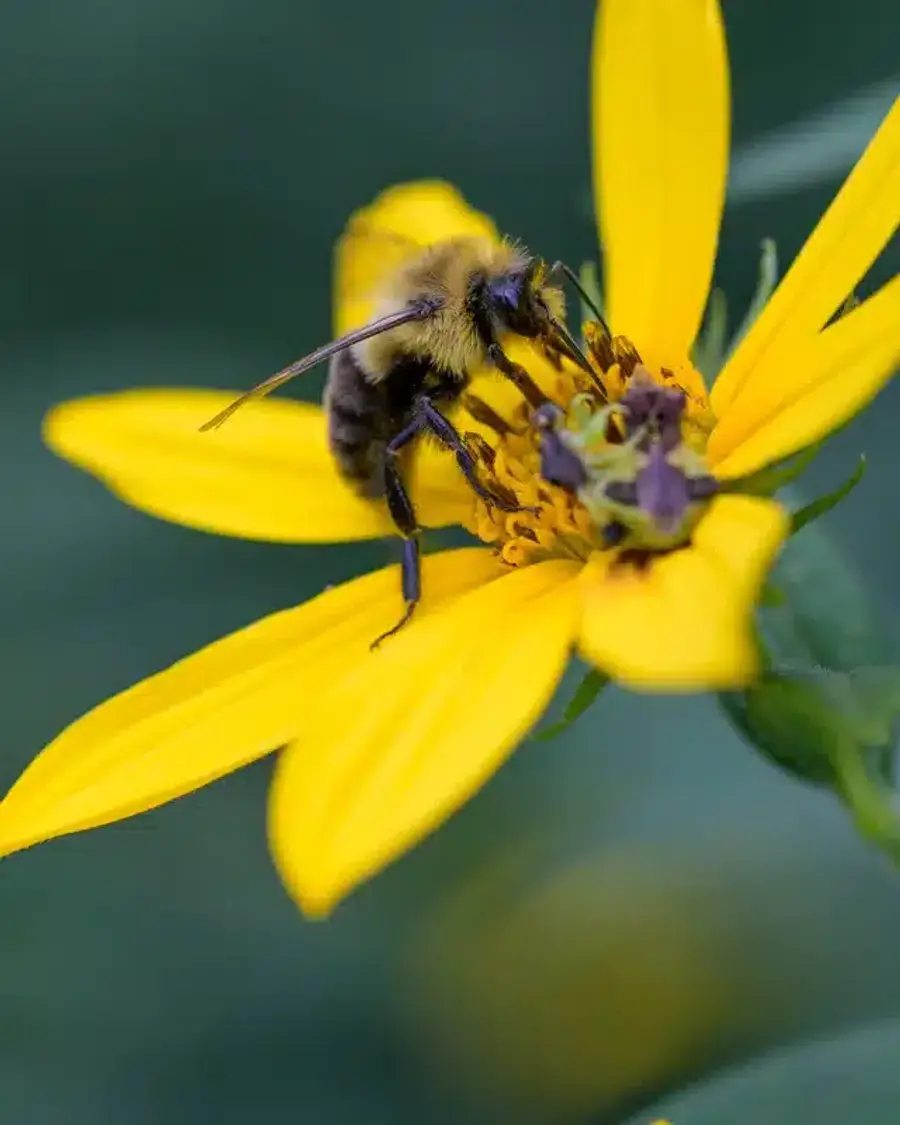
Both types of bees carry pollen in specialized structures called corbiculae or pollen baskets. However, you’ll notice the difference in how they appear when loaded with nectar and pollen. Honey bees carry wet pollen pellets that look compact, while bumblebees often appear dustier due to their fuzzy bodies collecting loose pollen.
Don’t confuse these beneficial pollinators with problematic insects like wasps, which have hairless bodies and pinched waists. Carpenter bees also look different from both honeybees and bumblebees, with their distinctive shiny black abdomens.
Honeybee vs Bumblebee Comparison
| Honeybee | Bumblebee | |
|---|---|---|
| Size | ½ to ⅝ inch | ½ to 1 inch |
| Appearance | Slender, amber-brown | Robust, fuzzy, bold colors |
| Colony Size | Thousands of bees | 100-300 bees |
| Nesting Location | Above ground cavities | Underground (70%) |
| Honey Production | Large surplus stores | Small amounts only |
Bee Nesting Habits and Colony Structure
The way these bee species build their colonies shows another major difference between bumblebees and honeybees. Honey bees live in large perennial colonies that can house thousands of bees. A single honeybee queen can live for several years, and the colony overwinters as a group that regulates temperature together.
These honey bee colonies prefer cavities about 40 liters in size. In nature, they choose tree hollows, but they can also set up in wall voids or attics. When they swarm, you might see them hanging temporarily on tree limbs or fences before finding a permanent home.
Bumblebees prefer very different nesting sites. About 70% of bumblebee nests are underground in abandoned rodent burrows, compost piles, or grass tussocks. The remaining bumble bee colonies nest in rock walls, under shed floors, or in dense leaf litter. Unlike honey bees, bumblebees start a new nest each spring when the overwintered queen emerges.
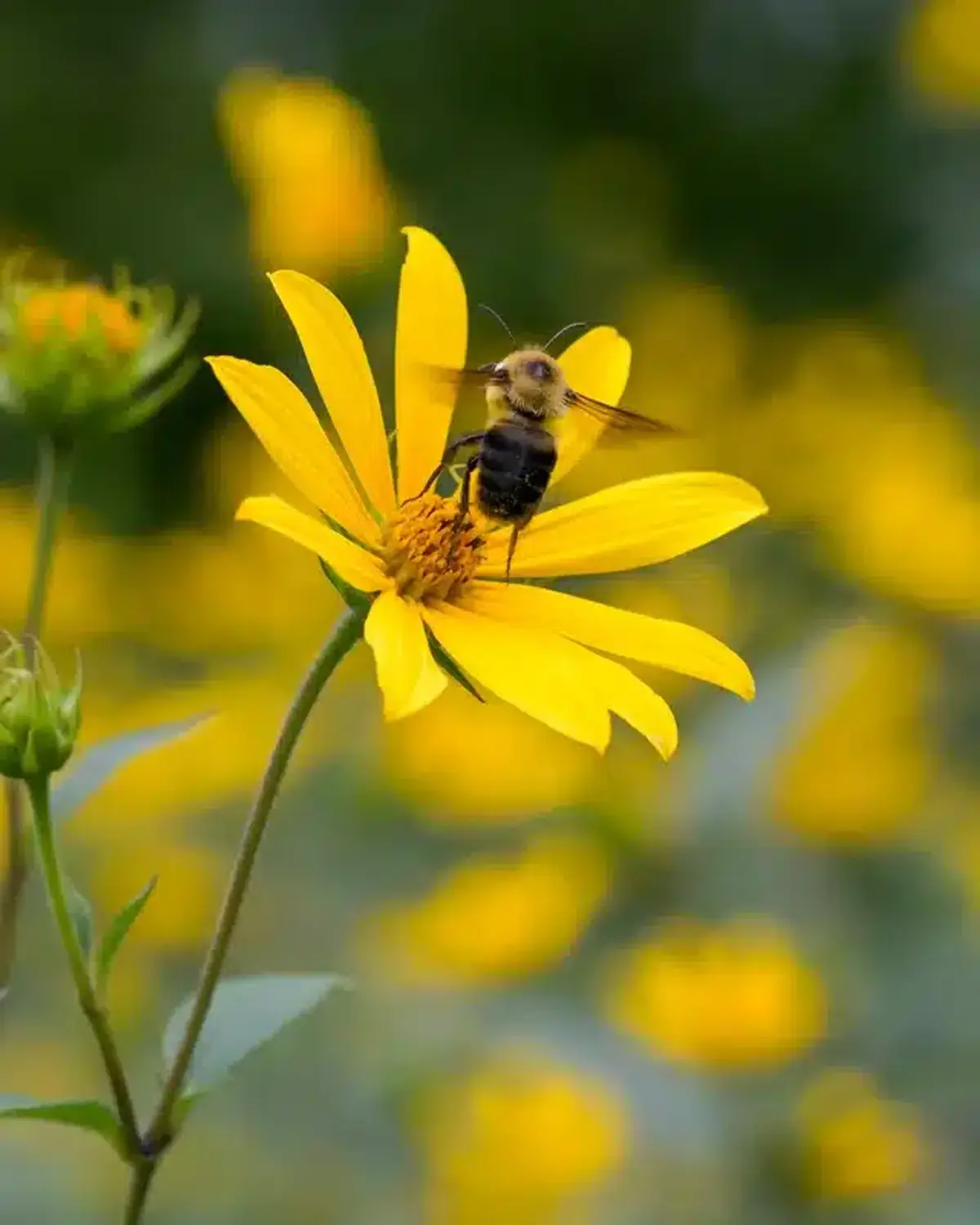
Bumblebee colonies stay much smaller than honey bee hives. Most bumble bee nests contain 100-300 workers by midsummer, though some species can reach over 1,000. The entire colony dies in fall except for new queens that hibernate alone through winter.
Honeybee Production Differences
One question people often ask is whether both types of bees make honey. Honey bees are famous for their honey production, creating large stores that help the colony over the winter months. A strong hive can produce honey well beyond what the bees need, which is why beekeepers can harvest excess honey without harming the colony.
Bumblebees do produce some honey, but only in small amounts. They don’t create the extensive honey stores that honeybees do because their colonies don’t survive winter. Worker bees take nectar back to feed the immediate colony needs rather than building up surplus supplies.
This difference in honey production relates directly to their colony survival strategies. Honey bees live in the same hive for many years, so they need substantial food reserves. Bumble bees focus their energy on producing new queens rather than storing food for winter survival.
Pollination Roles in Your Garden
Both honeybees and bumblebees serve as important pollinators, but they excel in different areas. Honey bees work as generalist foragers with sophisticated communication systems. They show high patch fidelity, meaning they return to the same flower sources repeatedly, making them excellent for consistent crop pollination.
Bumblebees bring unique pollination abilities that honey bees can’t match. They perform buzz pollination, vibrating their flight muscles to release pollen from flowers like tomatoes, peppers, and blueberries. This technique makes them essential for crops like tomatoes and other plants that require sonication.
Additionally, bumble bees are generally able to fly in cooler temperatures and lower light conditions than honey bees. While honey bees generally stay in the hive during cool, wet weather, bumblebees continue foraging. This extended working schedule helps ensure consistent pollination throughout varying weather conditions.
Research shows that native bee diversity significantly increases agricultural productivity. The complementary roles these two types of bees play create more stable fruit set than either species working alone.
What does the science say?
According to research published in WIRED, native bee diversity, especially Bombus species (bumblebees), added approximately $300 per acre in blueberry yield value in Mid-Atlantic trials. The study demonstrated that multiple bee species working together provide more reliable pollination than relying on honeybees alone, highlighting the economic importance of maintaining diverse pollinator populations.
When Bees Become Problematic
Most of the time, I end up educating customers about the benefits of these pollinators rather than treating them. However, there are situations when homeowners need to address bee activity. Honey bees may create concerns when they swarm and cluster on structures, or when established colonies move into wall voids or attics.
Honey bee swarms usually appear non-aggressive, but established colonies can become defensive when disturbed. Since honeybees have a barbed stinger, each bee can only sting once before dying. The barbed design means the sting is more painful and the stinger stays embedded in skin.
Bumblebees create different challenges because they nest closer to ground level. Their nests near walkways, under decking, or in shed areas can be disturbed by mowing or foot traffic. Bumblebees can sting multiple times because they have a smooth stinger, but they rarely do so unless they feel threatened or their nest is directly disturbed.
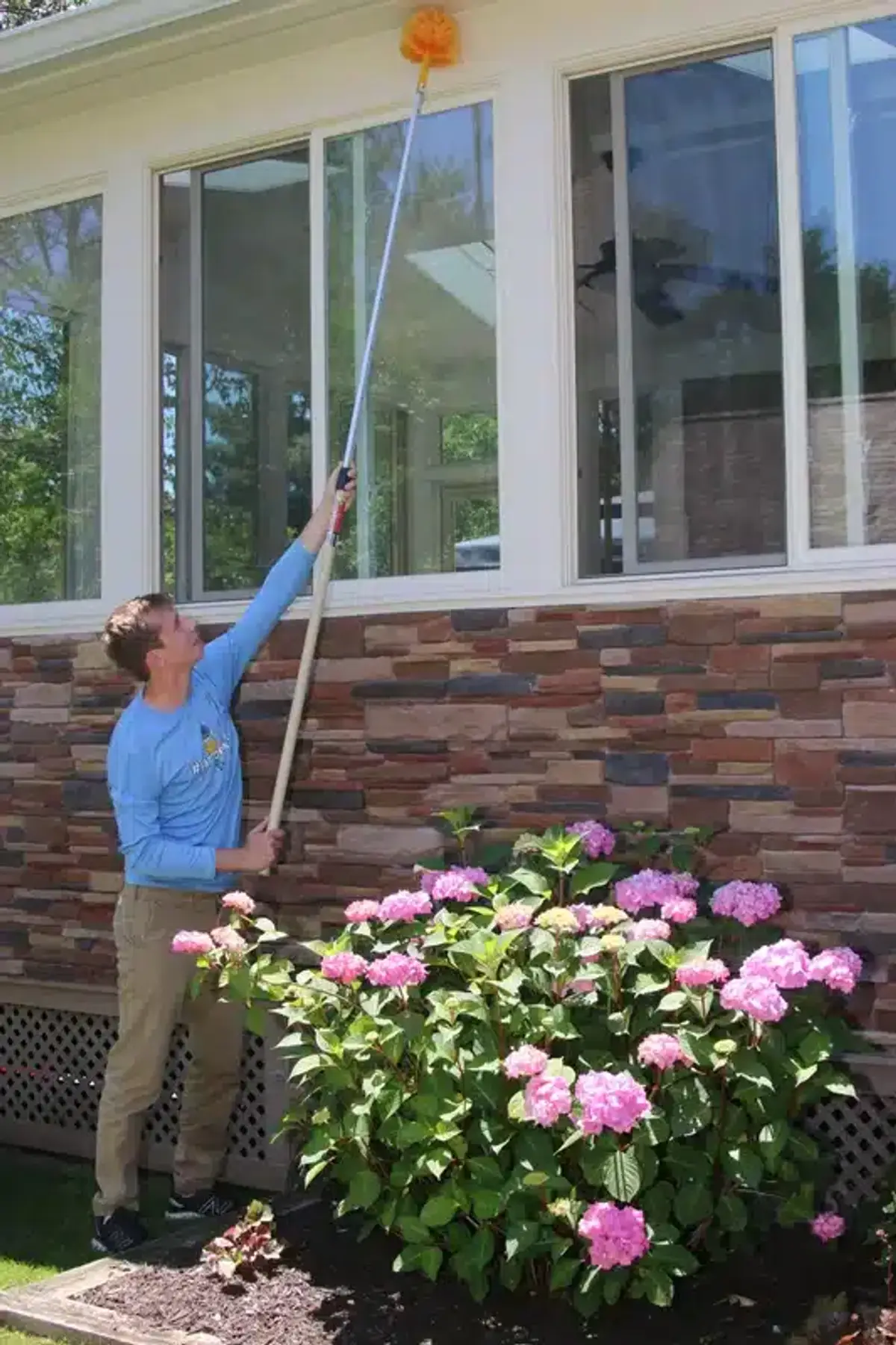
As a registered technician, I know how important accurate identification becomes when dealing with any flying insect. Homeowners sometimes confuse beneficial bee species with more problematic insects like wasps or carpenter bees that can damage wooden structures.
Management Strategies for Beneficial Bees
Unless there’s a threat to family members or someone with severe allergies, my approach focuses on protecting these beneficial insects. Since our family company has been serving the DMV for over 50 years, I’ve seen increasing awareness in our client base about protecting pollinators.
For honey bee swarms, the best approach involves contacting local beekeepers who can safely relocate the colony. The Northern Virginia Beekeepers Association offers free swarm removal services. Never spray water or insecticide on swarming honey bees, as this can make them aggressive.
When honeybees nest in wall voids or attics, professional removal becomes necessary. This process requires removing the bees, comb, and honey to prevent melting and secondary pest problems. Killing the bees without removing the honey creates bigger problems down the road.
For bumblebee nests, the best strategy often involves leaving them alone until the colony naturally dies in fall. Since bumble bees and honey bees both play crucial roles in the ecosystem, temporary inconvenience usually outweighs the benefits of removal.
If removal becomes absolutely necessary, flagging the area to avoid mowing and educating family members about the short colony life often resolves concerns. Remember that some bumble bee species like the rusty-patched bumble bee are federally protected, making unauthorized removal illegal according to the U.S. Fish & Wildlife Service guidelines.
Supporting Pollinator Populations
The best long-term approach involves creating pollinator-friendly environments that support healthy bee populations. Both types of bees need continuous bloom sources from early spring through late fall. Native plants work particularly well because they’ve evolved alongside local pollinators.
For early season foraging, leave dandelions and other spring flowers that provide crucial nectar when few other sources exist. Bumblebees prefer diverse flower shapes and sizes, while honey bees work efficiently on mass plantings of single flower types.
Creating nesting habitat helps support both species. Leave some areas with leaf litter, dead wood, and brush piles for potential bumblebee nesting sites. Maintain bare, undisturbed soil patches and consider building rock walls that provide cavity options.
Reducing pesticide use protects these beneficial insects. When pest control becomes necessary, work with companies that understand the importance of timing treatments to minimize impact on pollinators. Many products can be applied when bees aren’t actively foraging to reduce exposure risks.
Essential Bee Support Steps
- Plant Native Flowers: Choose plants that bloom from early spring through late fall to provide continuous nectar sources
- Create Nesting Habitat: Leave areas with leaf litter, dead wood, and brush piles for bumblebee nesting sites
- Avoid Pesticides: Time treatments when bees aren’t foraging or choose bee-safe alternatives
- Professional Guidance: Work with pest control companies that understand pollinator protection when treatments are necessary
Professional Assessment and Safety
When bee activity creates concerns around your property, professional assessment helps determine the best course of action. Our registered technicians can accurately identify whether you’re dealing with honeybees, bumblebees, or other flying insects that might require different management approaches.
For households with bee-allergic family members, we can recommend exclusion methods that reduce the likelihood of future nesting without harming beneficial species. This might include sealing potential entry points or modifying landscaping to redirect bee traffic away from high-use areas.
Understanding these differences can help homeowners make informed decisions about managing pollinators. Differences can help us protect both human safety and these crucial ecosystem contributors. Most situations don’t require elimination of beneficial bees, especially when you understand their behavior and seasonal patterns.
If you’re dealing with bee activity around your property and need professional assessment, don’t hesitate to reach out. Our team can help identify the species involved and recommend the most appropriate management strategy for your specific situation. Call us at 703-683-2000 or email info@bettertermite.com for expert guidance on managing pollinators around your home.
Frequently Asked Questions
What is the difference between a bumblebee and a honeybee?
+
The main differences include size, appearance, and nesting habits. Honeybees are smaller (½-⅝ inch), slender, and amber-colored with sparse hair. Bumblebees are larger (½-1 inch), very fuzzy, and have bold black and yellow bands. Honeybees live in large perennial colonies with thousands of bees, while bumblebees create small annual colonies of 100-300 individuals that die off each winter.
Does a bumblebee make honey?
+
Yes, bumblebees do make honey, but only in very small amounts for immediate colony needs. Unlike honeybees that produce large honey stores for winter survival, bumblebees focus on feeding their current colony since they don't overwinter as a group. Their small-scale honey production means there's never enough surplus for harvesting.
Are honey bees or bumble bees more aggressive?
+
Both species are generally docile when foraging and only become defensive when their nest is threatened. Honeybees may seem more aggressive because their larger colonies have more individuals to defend the hive. Bumblebees are typically very gentle unless you directly disturb their nest. Neither species is naturally aggressive toward humans during normal flower-visiting activities.
Do bumble bees sting like honey bees?
+
Bumblebees and honeybees sting differently. Honeybees have barbed stingers that get stuck in skin, causing the bee to die after one sting. Bumblebees have smooth stingers and can sting multiple times without dying. However, bumblebees rarely sting unless their nest is directly threatened, making multiple stings uncommon in real-world situations.
Where do bumblebees and honeybees typically nest?
+
Honeybees prefer above-ground cavities like tree hollows, wall voids, or attics where they can build vertical wax combs. Bumblebees usually nest underground in abandoned rodent burrows, compost piles, or under structures like sheds. About 70% of bumblebee nests are below ground level, while honeybees almost always nest in elevated locations.
Which bee is better for pollinating my garden?
+
Both bees excel at different pollination tasks. Honeybees work well for plants that benefit from consistent visits and mass pollination. Bumblebees are essential for plants requiring buzz pollination like tomatoes, peppers, and blueberries. They also work in cooler weather when honeybees stay in their hives. Having both species provides the most complete pollination coverage for diverse garden plants.
When should I call pest control for bees?
+
Contact pest control when bees nest in high-traffic areas that pose safety risks, when household members have severe bee allergies, or when you need professional species identification. Most bee situations don't require elimination - often exclusion methods or connecting with local beekeepers for relocation works better. Professional assessment helps determine whether you're dealing with beneficial bees or more problematic insects.
Can I remove a bee nest myself?
+
We don't recommend DIY bee nest removal, especially for honeybees in wall voids. Improper removal can make bees aggressive and leave honey that attracts other pests. Bumblebee nests often resolve naturally when the colony dies in fall. If removal is necessary, contact local beekeepers for honeybee swarms or pest control professionals who understand pollinator protection for established colonies.
With five years of hands-on experience in the pest control industry, George Schulz is a registered technician with the Virginia Pest Management Association and a proud third-generation professional in a family business that's been protecting homes for over 57 years. He manages and trains a team of service pros while also leading internal research efforts—recently spearheading a deep-dive review of thousands of documents on pest control materials to hand-pick the most kid and pet friendly, most effective solutions tailored specifically for homes in the DC metro area.
